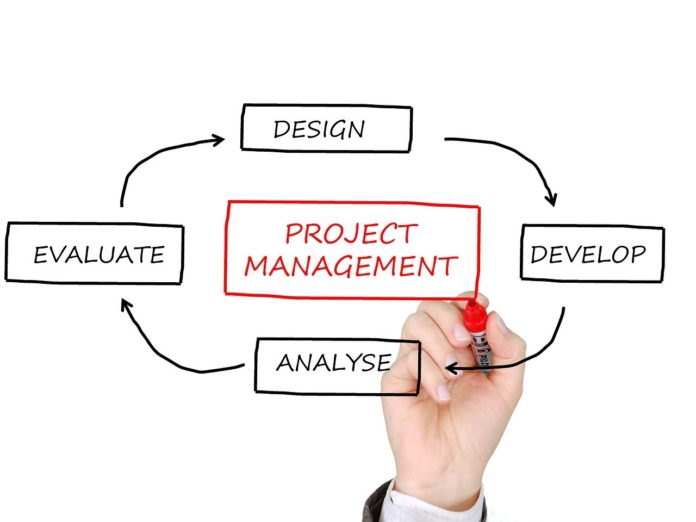This term refers to a systematic approach to planning, implementing, and evaluating initiatives. When appropriately used, PCM can assist organizations in improving the effectiveness of their humanitarian efforts while also making sure that everyone involved is speaking the same language.
By integrating child development and rights into humanitarian action, this standard provides a child protection focus to the usual humanitarian program cycle. Program cycle models such as the Humanitarian Program Cycle (HPC), which is utilized when a Humanitarian Coordinator is present, are compatible with this model.
It’s preferable to use “program management” rather than “project management” because a project is limited in scope. In light of the changing circumstances, a program focuses on relief to rehabilitation to development. A thorough understanding of the program life cycle is a great asset, but knowing how to manage it effectively is even more crucial. The best project management course will teach you how to manage a program from beginning to end.
The Program Cycle has been developed to make sure that program answers are both relevant and suitable:
- The first step is recognizing the significance of childhood and the necessity of safeguarding children.
- The next step includes assessing the situation, implementing and monitoring the reaction, and evaluating and learning from the experience.
Program management life cycle
As we have learned, a successful program is contingent on the success of its initiatives, and we know this to be true. As the software progresses through the various transformation stages, it is possible to proceed onto the next phase until it reaches its final state of completion.
Project management’s lifespan is closely related to the lifecycle of a program. Program management is more concerned with results and gains regarding a company’s long-term success. In contrast, project management is more concerned with customer pleasure.
Various stages of the Life Cycle
When a program receives funds or a program manager is hired, the program’s life formally begins. It is a common occurrence during the process of formulating a product. The three fundamental phases are program definition, benefit delivery, and closure. “
The job of a program manager is to orchestrate the activities of the program and its many components as it moves through the various stages of the life cycle. A program manager’s job is accessible if they are familiar with the life cycle phases and the regular activities during each step.
However, modern best-practice strategy is considered a continuing process of making decisions based on a well-defined vision and a set of goals. It should reflect this view in the program management lifecycle, allowing feedback from operational benefits measurements to the plan itself. There are five general stages or procedures in the life cycle of this type of program:
Stakeholder analysis and agreement on the program’s purpose and objectives, which may include a functional blueprint, are part of the first stage of the formulation process. It is an iterative procedure.
The program’s operational processes and structures and a comprehensive business case and technical plan are drafted during this stage. With the formulation, this is an iterative process. The program’s constituent tasks and other actions and the program’s transition into the business are part of the Deployment stage. It’s a perpetual cycle.
Program-level assessments of benefits realization and assessments of transition to operational benefit success are part of the Appraisal stage. The program’s constituent tasks and other actions and the program’s transition into the business are part of the Deployment stage. It’s a perpetual cycle.
Notably, the program’s development is done strategically and includes the strategic players and decision-makers involved. The program team and the governance team will be involved in the organization stage, translating the business goals into actual program outputs. In this deployment stage, projects are initiated, planned, and implemented. Other supporting activities, and project reviews, including the approval of deliverables, occur.
The program’s constituent tasks and other actions and the program’s transition into the business are part of the Deployment stage. It’s a perpetual cycle. If broken down into these five phases, you may manage even the most complex projects.
Organizations can adapt to change at a pace consistent with their own culture during regular program cycles. When pacing the program, these intervals of stability, which usually coincide with stage gates, are typically identified.
As a stakeholder in the program, it is your responsibility to understand your role and how program management can help your organization achieve its goals. Guides and standards can be helpful, but it is your responsibility as a stakeholder to know your role and how program management can help your organization succeed. If you want to implement a plan and get value out of it, you need a program manager.
Sponsors will be able to explicitly articulate and link the improvements they expect to the strategy to ensure that they are realized and aligned with the company objectives. Managers of programs will learn how to provide practical support for executives and sponsors and offer quantifiable results to the company. The job of project managers is critical to the success of the program. As a result, operational and technical users will ensure that the projected enhancements are appropriately integrated and provide the desired benefits.
Wrapping up
Unlike Aesop’s fables, we live in a business-like environment where the hare always wins over the turtle. Increasing the effectiveness of an organization’s operations is a never-ending pursuit for businesses. An investigation into the methodology, tools, processes, and standards needed to allow improved cooperation within and between projects and multi-disciplinary departments will be the subject of this study.
The Project Management Office formation is necessary to ensure that a project is completed on time and within budget (PMO). While a PMO is not required to manage and deliver a task correctly, its existence increases the chances of success.
The project management office’s mission is to ensure that a single established project management methodology manages all projects and programs and establishes a knowledge network that will promote uniformity by providing common methods, tools, processes, and standards.










